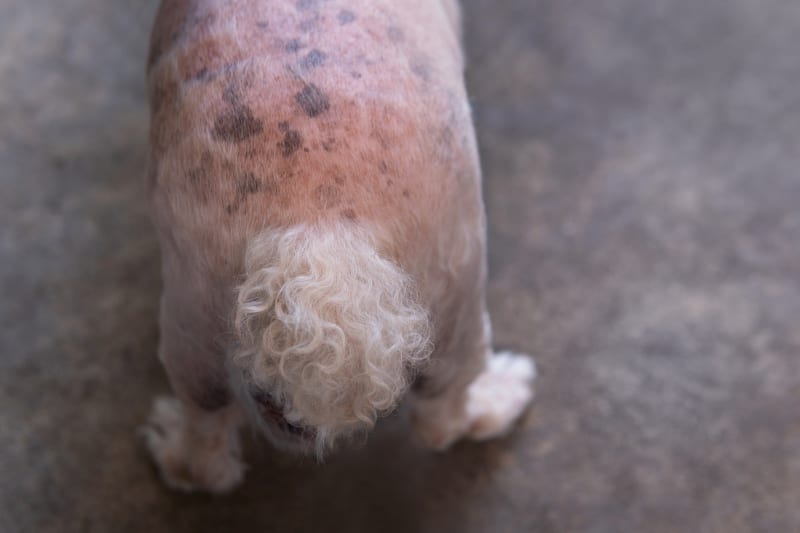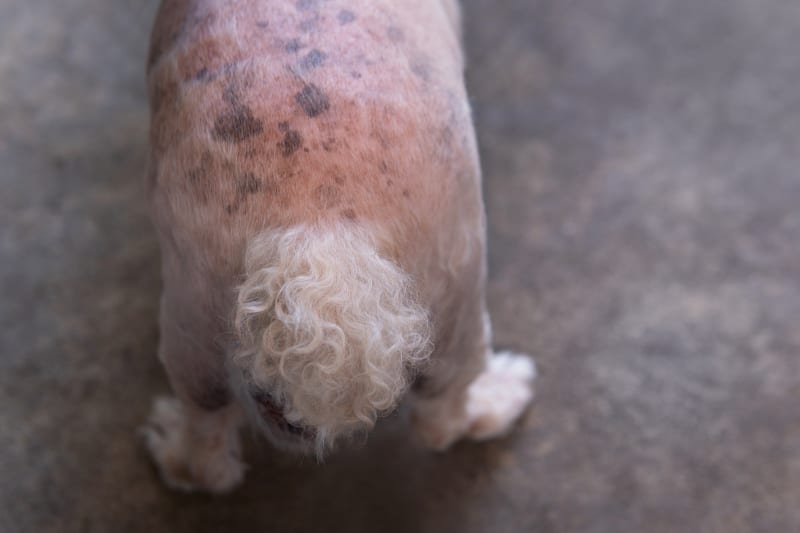As a dog owner, there’s nothing more distressing than seeing your furry friend scratch and lick at their skin obsessively, only to discover a nasty black rash on their groin area. The uncertainty and concern can be overwhelming, leaving you wondering what’s causing this discomfort and how to alleviate it.
A Common yet Misunderstood Issue
Black rashes on dogs’ groins are more common than you might think, but they’re often misunderstood or misdiagnosed. As a responsible dog owner, it’s essential to understand the potential causes of this issue and how to treat it effectively.
The Importance of Identifying the Cause
Before we dive into the possible causes and treatments of black rashes on dogs’ groins, it’s crucial to emphasize the significance of identifying the underlying cause. A proper diagnosis is essential to determine the most effective course of treatment and prevent complications that can lead to further skin irritation or even infections.
What Causes Black Rashes on Dogs’ Groins?
In this section, we’ll explore some of the most common causes of black rashes on dogs’ groins. From allergies and irritants to fungal and bacterial infections, we’ll examine the possible underlying factors that can contribute to these unsightly lesions.

As we continue exploring the world of black rashes on dogs’ groins, it’s essential to delve deeper into the potential causes and treatment options. Let’s take a closer look at some of the most common culprits behind these unsightly lesions.
Allergies: A Common Cause
One of the most common reasons for black rashes on dogs’ groins is allergies. Allergic reactions can occur when your dog comes into contact with an allergen, such as a food or environmental trigger. This reaction can cause intense itching, which leads to excessive scratching and licking – ultimately resulting in a black rash.
Irritants: The Unexpected Culprit
Another unexpected cause of black rashes on dogs’ groins is irritants. These can include harsh chemicals, dyes, or fragrances found in shampoos, soaps, or other products used on your dog’s skin. Even seemingly harmless substances like essential oils or perfume can trigger an allergic reaction.
Fungal and Bacterial Infections: A Growing Concern
Infections caused by fungi, bacteria, or yeast can also lead to black rashes on dogs’ groins. These infections often start as minor issues but can quickly escalate into more severe conditions if left untreated. For example, Malassezia dermatitis, a fungal infection, can cause intense itching and black lesions.
Other Factors: A Combination of Triggers
In many cases, the development of black rashes on dogs’ groins is the result of a combination of triggers. This might include allergies to environmental allergens like pollen or dust mites, as well as irritants from certain products or foods. It’s essential to consider all potential factors when trying to diagnose and treat this condition.
What Can You Do About Black Rashes on Dogs’ Groins?
While understanding the causes of black rashes is crucial, it’s equally important to know how to treat them effectively. We’ll explore some of the most effective treatment options in our next section, so be sure to stick around!
In our previous sections, we’ve discussed the importance of identifying the cause of black rashes on dogs’ groins and explored some of the most common causes, including allergies and irritants, fungal and bacterial infections, and skin conditions.
Summary of Key Points
To recap, here are the key takeaways:
- Black rashes on dogs’ groins are more common than you might think, but they’re often misunderstood or misdiagnosed.
- A proper diagnosis is essential to determine the most effective course of treatment and prevent complications that can lead to further skin irritation or even infections.
- The potential causes of black rashes on dogs’ groins include allergies and irritants, fungal and bacterial infections, and skin conditions such as seborrhea and pyoderma.
Final Insights
If you suspect that your dog is suffering from a black rash on their groin area, it’s essential to seek professional advice from a veterinarian. With the right diagnosis and treatment plan in place, you can help alleviate your dog’s discomfort and prevent any potential complications.
A Strong Conclusion
In conclusion, understanding the causes and treatments of black rashes on dogs’ groins is crucial for providing your furry friend with the best possible care. By working closely with a veterinarian to diagnose and treat this issue, you can help keep your dog’s skin healthy and happy. Remember, as a responsible dog owner, it’s always better to err on the side of caution when it comes to your pet’s health.
The Best Food for Large Breed Dogs: Is your furry friend struggling with joint issues or digestive problems? Find out what to feed your large breed dog to keep them healthy, happy, and full of energy. From grain-free diets to recipes that promote overall well-being, get the expert advice you need.
What is Clobetasol Propionate Cream Equivalent: Are you dealing with skin issues like eczema, psoriasis, or dermatitis? Uncover the truth about clobetasol propionate cream and its equivalents. Learn what products work best for different skin types and get expert tips on how to use them effectively.



